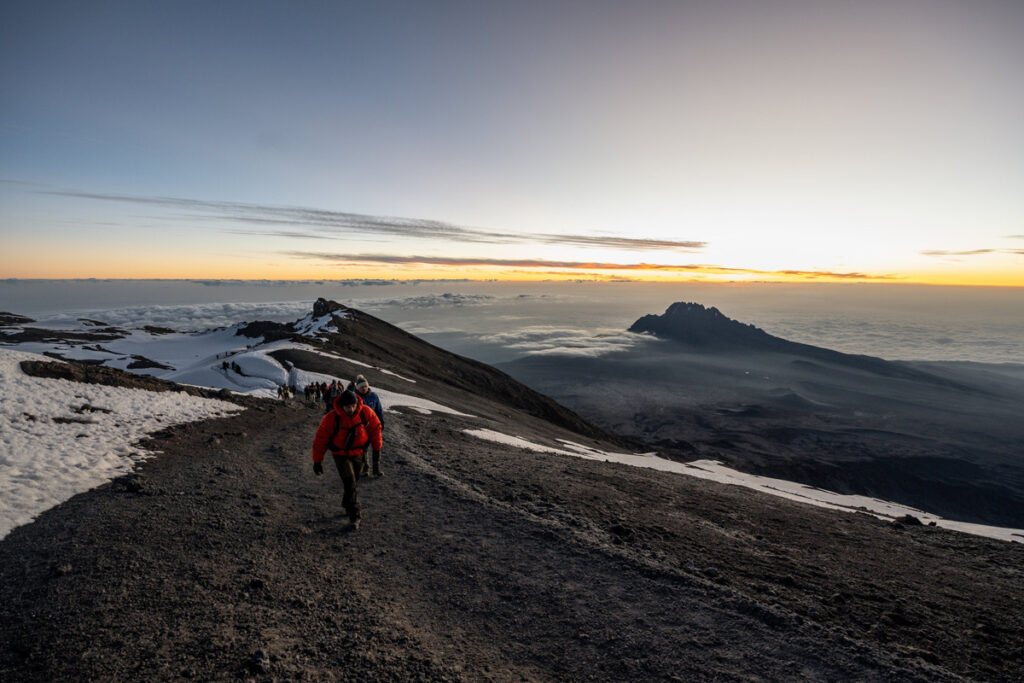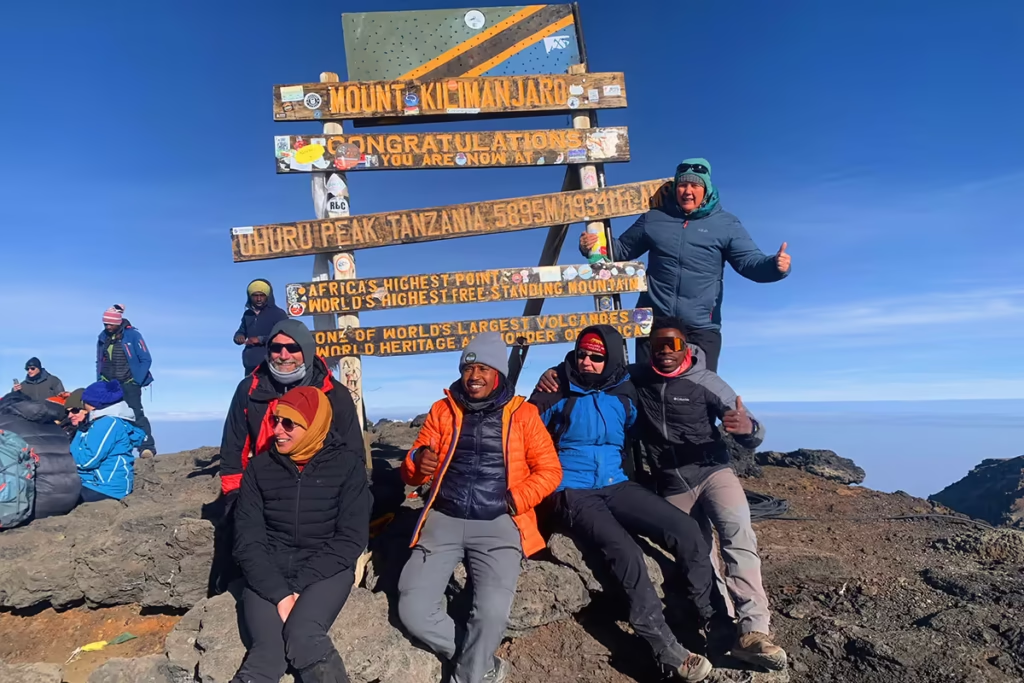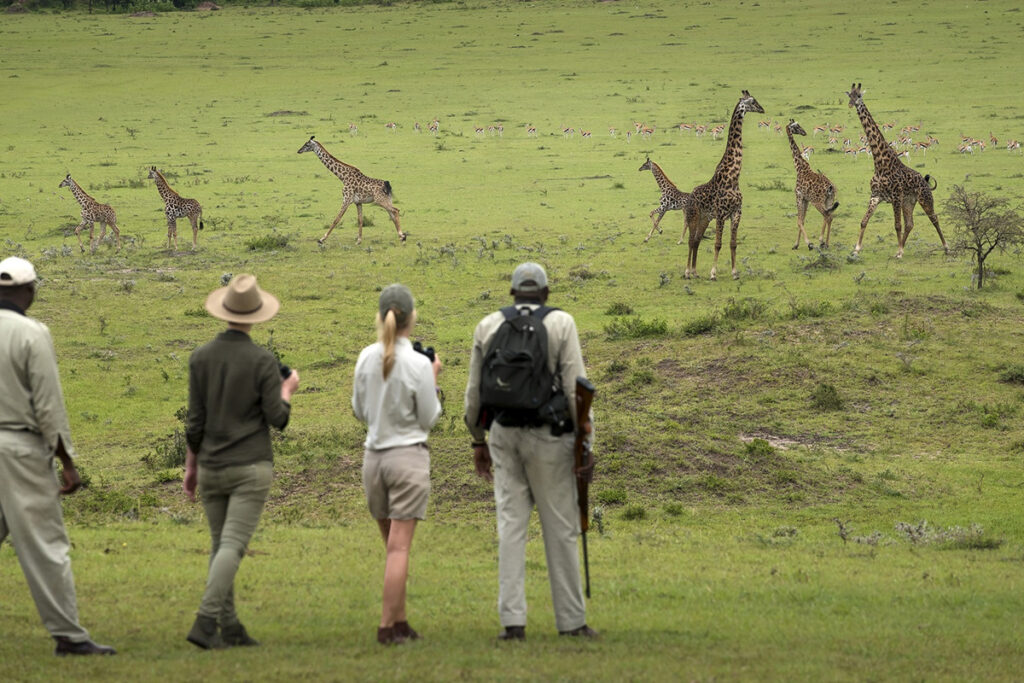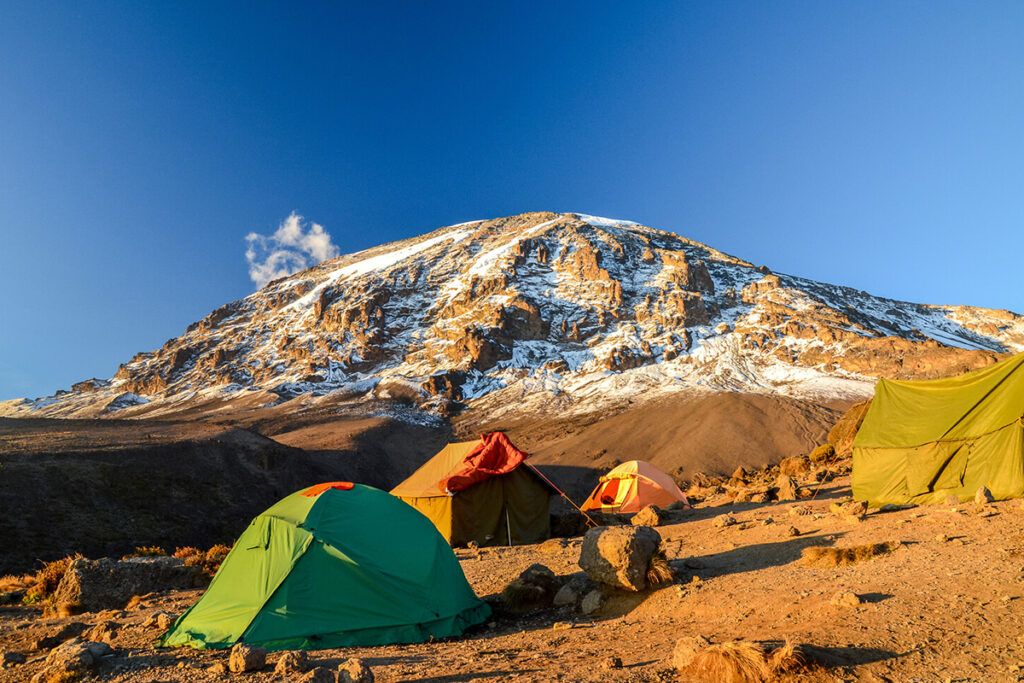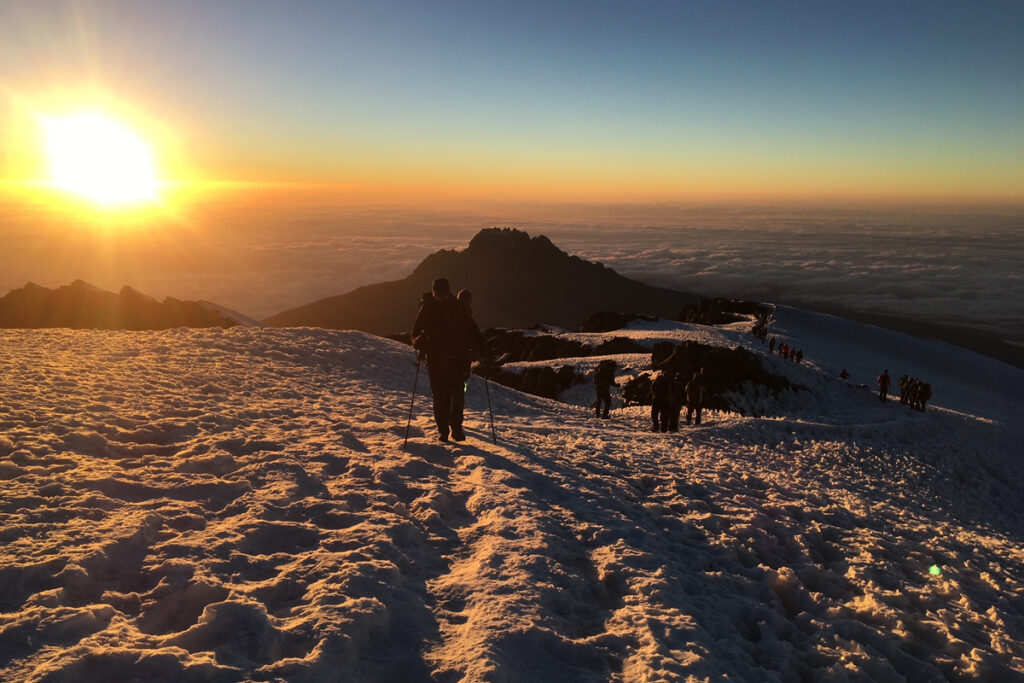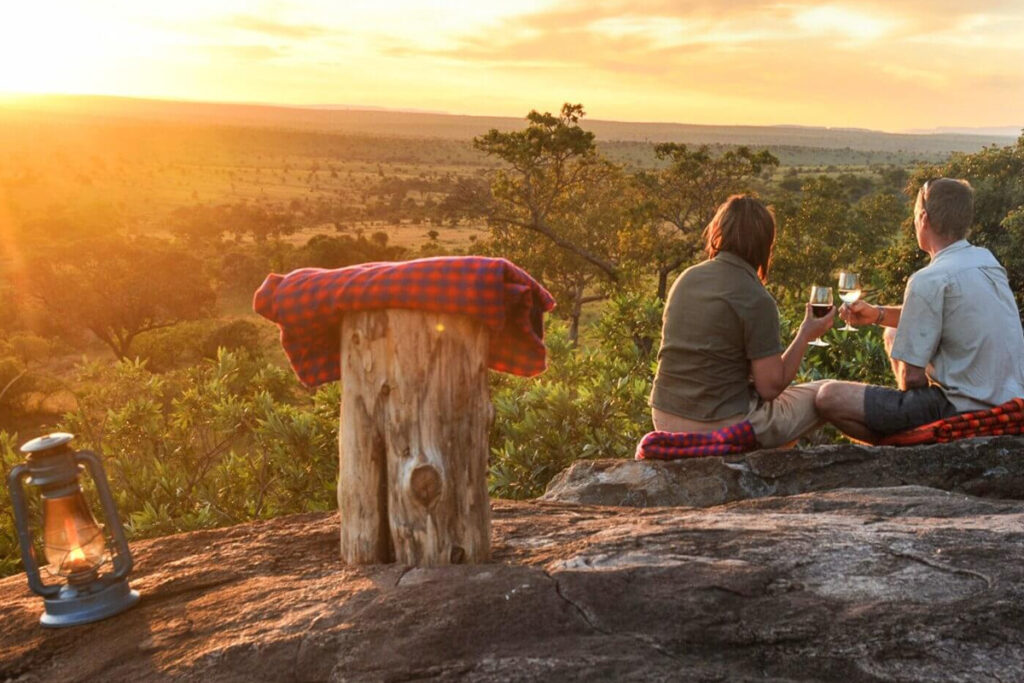Who is the first man to climb Kilimanjaro?
Yohani Kinyala Lauwo was a Chagga guide who accompanied German geologist Hans Meyer and Austrian mountaineer Ludwig Purtscheller on their expedition to climb Mount Kilimanjaro in 1889.
Yohani Kinyala Lauwo was a member of the Chagga tribe, who are indigenous to the area surrounding Mount Kilimanjaro. He was recruited by Hans Meyer to serve as a guide and porter on the expedition, and he played a key role in helping the team navigate the challenging terrain and reach the summit.
After the successful ascent of Mount Kilimanjaro, Yohani Kinyala Lauwo continued to work as a guide in the region, and he later accompanied Meyer on an expedition to explore the nearby Ngorongoro Crater. This expedition resulted in the discovery of several new species of animals, and Yohani Kinyala Lauwo’s expertise and knowledge of the area were instrumental in its success.
Today, Yohani Kinyala Lauwo is remembered as a pioneering figure in the history of mountaineering and exploration in East Africa, and his contributions to the early expeditions of Mount Kilimanjaro and Ngorongoro Crater are celebrated as a testament to the enduring spirit of adventure and discovery
What to consider when you plan to climb Kilimanjaro
Booking a Kilimanjaro trek is an exciting adventure, but there are several things to consider before making your reservation. Here are some important factors to keep in mind:
- Physical Fitness: Kilimanjaro is a challenging climb, so it’s important to be physically fit before embarking on the journey. Consult with your doctor before booking the trek, and consider training for several months before departure.
- Climbing Route: There are several routes to climb Kilimanjaro, each with varying levels of difficulty, scenery, and duration. Research the routes and choose one that best suits your preferences and experience.
- Tour Company: Book your trek with a reputable tour company that has a good track record of safety and customer service. Check reviews and ask for recommendations from friends or travel forums.
- Weather and Season: The best time to climb Kilimanjaro is during the dry seasons from January to mid-March and June to October. Weather conditions can greatly affect the success and enjoyment of the climb, so plan accordingly.
- Altitude Sickness: Kilimanjaro is a high-altitude climb, and altitude sickness can affect climbers at any level of fitness. Learn about the symptoms and prevention of altitude sickness, and be prepared to take necessary precautions.
- Gear and Equipment: Make sure to have proper gear and equipment for the climb, including warm clothing, sturdy hiking boots, and a good quality sleeping bag. Consider renting gear from your tour company if you don’t have everything you need.
- Budget: Climbing Kilimanjaro can be an expensive undertaking, so make sure to budget accordingly. Consider all costs, including tour fees, gear rental, and travel expenses.
By considering these factors, you can ensure a safe and enjoyable Kilimanjaro trek.
how hard is to climb kilimanjaro?mention lauwo adventures and use importance key words for hiking kilimanjaro
Climbing Kilimanjaro is considered a challenging trek, but it is achievable with proper preparation and guidance. Lauwo Adventures is a reputable tour company that offers guided Kilimanjaro treks with experienced guides and porters. Here are some important keywords to consider when planning a Kilimanjaro hike with Lauwo Adventures:
- Fitness: Kilimanjaro requires a good level of physical fitness, so it’s important to train and prepare well before the climb.
- Altitude: The altitude on Kilimanjaro can be challenging, with the summit reaching 5,895 meters (19,341 feet) above sea level. Altitude sickness is a risk that needs to be taken seriously, and Lauwo Adventures takes measures to prevent and manage this.
- Route: Choosing the right route is important, and Lauwo Adventures offers several different routes to choose from based on your experience and preferences.
- Gear: Having the right gear is essential for a successful climb, and Lauwo Adventures provides a comprehensive gear list and offers gear rental for those who need it.
- Safety: Safety is a top priority for Lauwo Adventures, and they have experienced guides who are trained in first aid and emergency protocols.
- Budget: Lauwo Adventures offers competitive pricing and transparency in their pricing structure, making it easier to budget for the climb.
- Experience: Climbing Kilimanjaro with Lauwo Adventures allows for a unique and unforgettable experience, with the opportunity to witness stunning landscapes and wildlife along the way.
In summary, climbing Kilimanjaro with Lauwo Adventures requires preparation, physical fitness, and the right gear. The company’s focus on safety and experience ensures a successful and memorable climb
Why Climb Kilimanjaro with a local Tour company?
Climbing with a local tour company can offer several advantages, including:
- Local knowledge: Local tour companies have extensive knowledge about the area, including the terrain, climate, and wildlife. This can help ensure that you have a safe and enjoyable climbing experience.
- Experienced guides: Local tour companies often employ experienced guides who are familiar with the climbing routes and can provide valuable insights into the local culture and history.
- Support local economy: By choosing a local tour company, you can contribute to the local economy and help support the development of the local community.
- Cost-effective: Local tour companies often offer competitive pricing, as they have lower overhead costs than international tour operators.
- Environmentally responsible: Local tour companies are often committed to sustainable tourism practices and responsible environmental management, which can help preserve the natural beauty of the area for future generations.
Overall, climbing with a local tour company can provide a more authentic and rewarding experience while supporting the local community and environment
How You Should Be Fit When You Need To Climb Kilimanjaro
To climb Kilimanjaro with Lauwo Adventures, you need to be physically fit and mentally prepared for the challenge. It is important to engage in regular cardiovascular exercise, such as hiking, running, or cycling, to improve your endurance and stamina.
Additionally, strength training exercises, such as squats and lunges, can help you build the leg muscles necessary for the climb. You should also consider altitude training, either by spending time at high elevations or using altitude simulation equipment.
It is important to acclimatize properly during the climb to avoid altitude sickness, so a slow and steady ascent is recommended. Proper nutrition and hydration are also essential for a successful climb
How is the weather of Kilimanjaro
The weather on Kilimanjaro can vary greatly depending on the altitude and the time of year. At the lower elevations, the weather can be warm and humid, while at the higher elevations it can be cold and dry.
Overall, the weather on Kilimanjaro can be divided into two seasons: the dry season and the rainy season. The dry season runs from June to October, and this is generally considered the best time to climb Kilimanjaro. During the dry season, the weather is generally clear and dry, with very little precipitation.
The rainy season runs from November to May, and during this time, the weather can be wet and unpredictable. The rainfall on Kilimanjaro tends to come in short, heavy bursts, rather than prolonged periods of rain.
It’s important to note that even during the dry season, the weather on Kilimanjaro can be unpredictable, and temperatures can vary greatly depending on the time of day and the altitude. It’s important to be prepared for all types of weather conditions, and to bring appropriate clothing and gear for both hot and cold temperatures
Why Kilimanjaro is the popular destination?
Mount Kilimanjaro, located in Tanzania, holds immense appeal for adventurers and nature enthusiasts. Here are some reasons why Kilimanjaro is a popular destination:
- Africa’s Highest Peak: Standing at 5,895 meters (19,341 feet), Kilimanjaro is the highest peak on the African continent. Summiting Kilimanjaro offers a sense of accomplishment and the opportunity to conquer one of the world’s iconic mountains.
- Accessibility: Kilimanjaro is relatively accessible compared to other high-altitude peaks. It does not require technical climbing skills or the use of ropes and specialized equipment. This accessibility makes it a popular choice for individuals with varying levels of trekking experience.
- Breathtaking Landscapes: Kilimanjaro showcases diverse and stunning landscapes. As you ascend, you’ll pass through distinct ecological zones, including lush rainforests, alpine meadows, and barren lunar-like landscapes. The ever-changing scenery adds to the allure and fascination of the climb.
- Unique Ecological Zones: The various ecological zones of Kilimanjaro harbor a rich biodiversity. From encountering unique flora and fauna in the rainforest to witnessing endemic plant species in the alpine desert, the mountain provides opportunities to appreciate and learn about its remarkable ecosystems.
- Cultural Experience: The Kilimanjaro region is home to local communities, including the Chagga people, who have a rich cultural heritage. Engaging with local guides and porters during the climb provides an opportunity to learn about their traditions, customs, and way of life.
- Personal Challenge: Climbing Kilimanjaro is a personal challenge that pushes physical and mental limits. The trek requires perseverance, determination, and resilience. Overcoming the difficulties and reaching the summit can be a life-changing experience that builds confidence and resilience.
- Sunrise from Uhuru Peak: Witnessing the sunrise from Uhuru Peak, the summit of Kilimanjaro, is a truly magical moment. As the golden rays of the sun illuminate the vast African plains below, it creates a surreal and awe-inspiring panorama that is etched into the memory of climbers forever.
These factors, along with Tanzania’s warm hospitality and the allure of exploring East Africa’s vibrant landscapes, contribute to the enduring appeal of climbing Mount Kilimanjaro.
Why people climb Kilimanjaro in full moon?
Climbing Mount Kilimanjaro during a full moon can be a personal preference for some climbers due to the following reasons:
- Enhanced Visibility: The full moon provides additional illumination during the night, making it easier to navigate the trails and reducing the need for artificial light sources. This can enhance safety and visibility, especially during summit night when climbers typically ascend in darkness.
- Scenic and Memorable Experience: Hiking under the glow of a full moon can create a unique and breathtaking atmosphere. The moonlight illuminates the landscape, casting dramatic shadows and creating a surreal ambiance. It can make the trek more visually captivating and memorable for climbers.
- Spiritual and Symbolic Significance: For some climbers, ascending Kilimanjaro during a full moon holds spiritual or symbolic meaning. The moon has long been associated with mystery, beauty, and transcendence in various cultures and belief systems. Climbing during a full moon may enhance the sense of connection to nature and evoke a deeper spiritual experience.
- Personal Preference: Some climbers simply enjoy the aesthetic appeal and the mystical aura of hiking under a full moon. It adds an extra layer of excitement and charm to their Kilimanjaro adventure.
It’s important to note that climbing Kilimanjaro during a full moon is not a requirement or necessary for a successful ascent. The choice of timing, including the moon phase, is subjective and varies among climbers. Each climber should consider their own preferences, comfort level, and logistical factors when planning their Kilimanjaro climb.
How Safe I Can Be In Kilimanjaro
At Lauwo Adventures, we understand the importance of safety and security when it comes to climbing Kilimanjaro. We prioritize the health and well-being of our clients above all else, and take several measures to ensure their safety during the climb.
Our guides are certified with Wilderness First Responders (WFR) and are trained to handle emergency situations. We conduct health checks twice daily to measure pulse, temperature, blood pressure, and oxygen saturation. Our guides carry emergency oxygen, portable stretchers, and first aid kits at all times. We also test your lung sounds with a stethoscope every morning to assess if there is any fluid on the lungs as a symptom of High Altitude Pulmonary Edema (HAPE).
We have arranged our trips to use daily climbing schedules for your body’s acclimatization, and monitor your water intake to ensure proper hydration. We are aware that Altitude sickness is caused by the failure of the body to adapt quickly enough to the reduced level of oxygen in the air as one gains altitude, and therefore, we educate our clients on the symptoms of mild and severe altitude sickness. We provide guidance on how to treat mild altitude sickness with rest, maintaining fluid intake, and by a painkiller such as paracetamol. We also provide Diamox to aid acclimatization, if needed, but we encourage our clients to listen to their bodies and give them a chance to acclimatize naturally before resorting to the use of Diamox.
For severe cases of altitude sickness, immediate descent is the only treatment. We have established protocols for handling emergencies on the mountain, including rescuing and helicopter evacuation (Kilimanjaro Search and Rescue). We carry life-saving equipment, such as emergency oxygen, to assist in case of emergency.
In conclusion, at Lauwo Adventures, we take the safety and security of our clients very seriously. We believe that climbing Kilimanjaro should be a memorable and enjoyable experience, and we do everything we can to ensure that our clients climb the mountain safely and securely.
What is the best route to climb Kilimanjaro?
Choosing the best route for climbing Kilimanjaro largely depends on your personal preferences and level of experience. However, there are a few popular routes that are recommended for most climbers. Lauwo Adventures offers guided Kilimanjaro treks on several routes, including the following:
- Machame Route: This is a popular route that is known for its scenic beauty and diverse terrain. It is a challenging route that requires a good level of fitness, but offers a high success rate for reaching the summit.
- Lemosho Route: This is a longer and more remote route that offers a quieter and more scenic climb. It is a good option for those who want to avoid the crowds on other routes and have more time to acclimatize.
- Rongai Route: This is the only route that approaches Kilimanjaro from the north, and is a good option for those who want a more remote and less crowded climb. It is a relatively easier route compared to others, but still requires a good level of fitness.
Lauwo Adventures offers guided treks on all of these routes, and their experienced guides can help you choose the best route based on your preferences and level of experience. They also provide all the necessary support and equipment for a safe and enjoyable climb
How To Wear In Summit Night
Summit night on Kilimanjaro can be very cold, with temperatures dropping well below freezing, so it’s important to dress appropriately to stay warm and comfortable. Here are some tips on how to dress for summit night:
- Layering is key: Wear several layers of clothing, so you can easily adjust your body temperature as needed. Start with a moisture-wicking base layer, add a fleece or down jacket for insulation, and finish with a waterproof and windproof shell layer to protect against the elements.
- Hat and gloves: Bring a warm hat and gloves to protect your head and hands from the cold. Consider bringing two pairs of gloves – one lightweight and one heavy-duty, so you can switch as needed.
- Warm socks: Wear thick, warm socks to keep your feet warm and dry. Consider wearing a pair of thin liner socks underneath your thicker socks for added warmth and moisture-wicking.
- Proper footwear: Wear sturdy, waterproof hiking boots that have been broken in and are comfortable. Consider bringing crampons or microspikes if there is snow and ice on the trail.
- Headlamp: Bring a headlamp with extra batteries to help you navigate the trail in the dark.
- Hydration: It’s important to stay hydrated during your climb, so bring a hydration bladder or water bottle that you can easily access while hiking.
Remember, the key to staying warm and comfortable during summit night is to dress in layers and bring the appropriate gear. Your guide from Lauwo Adventures will also provide guidance on what to wear and bring for summit night, so be sure to follow their recommendations.
How Is The Trail In Mount Kilimanjaro
The trails on Kilimanjaro vary depending on which route you take. Each route has its own unique terrain and landscapes. Some routes are more challenging than others, but all require a good level of fitness and endurance.
For example, the Machame Route is one of the most popular routes on Kilimanjaro and is known for its steep and challenging ascent. The trail passes through a variety of landscapes, including dense rainforest, heath and moorland, and rocky alpine desert.
The Lemosho Route is another popular route that offers a longer, more gradual ascent. The trail passes through pristine forests and offers stunning views of the Shira Plateau and Western Breach.
Regardless of which route you take, it is important to be prepared and to have the proper gear and equipment for your trek. It is also important to go with a reputable and experienced tour operator, such as Lauwo Adventures, who can guide you through the trail and ensure your safety and comfort throughout the journey.
How Is the Food In Mountain
The quality of food in the mountain depends on various factors, such as the trekking company you choose, the duration of the hike, and the altitude you reach. However, many trekking companies, including Lauwo Adventures in Tanzania, provide hikers with nutritious and varied meals to sustain them during their trek.
During your Kilimanjaro hike with Lauwo Adventures, you can expect to be provided with breakfast, lunch, dinner, and snacks. The meals are prepared by experienced and trained chefs, who maintain high hygiene standards. Lauwo Adventures also accommodates dietary restrictions and preferences, such as vegetarian or gluten-free diets.
In addition to meals, Lauwo Adventures provides hydration options including water, tea, and coffee. They also offer snacks and fruits to carry with you during the trek. Overall, Lauwo Adventures takes the nutrition and well-being of hikers seriously and makes sure to provide high-quality and nourishing food during the Kilimanjaro hike.
How Are The Toilets In Kilimanjaro
Lauwo Adventures provides toilet facilities for their clients during Kilimanjaro treks. We believe that proper hygiene and sanitation are essential for a safe and enjoyable trek.
On our Kilimanjaro treks, we use portable and eco-friendly toilets that are carried and set up by our team. The toilets are clean, hygienic, and comfortable to use. Our team takes care of the cleaning and maintenance of the toilets during the trek to ensure that they are always in good condition.
Overall, Lauwo Adventures takes the comfort and hygiene of our clients seriously, and we strive to provide the best possible facilities during our Kilimanjaro treks.
How To Tip In Kilimanjaro
Tipping in Kilimanjaro, Tanzania, is common practice and is generally expected by service providers in the tourism industry. Here are some tips on how to tip in Kilimanjaro:
- Safari Guides and Mountain Guides: It is customary to tip your guide after a safari or mountain climb. A typical tip for a guide is around $20-25$ per day, but this can vary depending on the length and difficulty of the trip.
- Porters: For porters, a typical tip is around $10-15$ per day. You may want to consider giving more if your luggage is heavy or if you have several porters assisting you.
- Hotel Staff: It is customary to tip hotel staff, such as housekeepers and waiters, around 10% of your bill. You can give the tip directly to the staff member or leave it in a designated tip jar or envelope.
- Taxi Drivers: Tipping taxi drivers is not common in Tanzania, but rounding up to the nearest whole number is appreciated.
- Street vendors: It’s not customary to tip street vendors, but if you receive exceptional service, you can tip them a small amount.
It’s important to note that while tipping is a common practice in Tanzania, it is ultimately up to your discretion. You should only tip what you feel is appropriate based on the level of service you received.
How Is The Accommodation In Tanzania
Accommodation options in Tanzania cater to a wide range of preferences and budgets, ensuring that travelers can find suitable places to stay throughout the country.
Hotels: Major cities, tourist hubs, and national parks offer a variety of hotels ranging from luxury resorts to budget-friendly options. These hotels often provide amenities such as restaurants, swimming pools, Wi-Fi, and concierge services.
- Lodges: Tanzania is known for its beautiful safari lodges, particularly in popular wildlife areas like the Serengeti, Ngorongoro, and Tarangire. These lodges offer comfortable and often luxurious accommodation, blending seamlessly with the natural surroundings. Many lodges also organize game drives and other activities.
- Tented Camps: Tented camps provide a unique safari experience, allowing guests to stay in spacious tents equipped with comfortable beds, en-suite bathrooms, and sometimes even private verandas. These camps offer an authentic bush experience while still providing essential amenities and services.
- Guesthouses and Bed & Breakfasts: In smaller towns and rural areas, guesthouses and B&Bs offer a more intimate and budget-friendly accommodation option. These establishments typically provide basic facilities and a cozy atmosphere, allowing travelers to interact with local communities.
- Eco-Lodges: Tanzania has a growing number of eco-lodges that prioritize sustainability and environmental conservation. These lodges use eco-friendly practices, blend with the natural environment, and offer immersive experiences focused on nature, wildlife, and local culture.
- Beach Resorts: Tanzania’s coastline, particularly in Zanzibar and Pemba, boasts stunning beach resorts. These resorts range from luxurious retreats with private villas and spas to more affordable beachfront properties, offering relaxation, water sports, and breathtaking ocean views.
It is advisable to book accommodations in advance, especially during peak travel seasons or when visiting popular destinations. Whether you prefer luxurious lodges, budget-friendly guesthouses, or unique tented camps, Tanzania offers a diverse range of accommodations to suit different tastes and budgets.
Our safari vehicles
To ensure a successful safari vehicle experience, here are some key points to consider:
- Safety: Choose a safari vehicle with proper safety features, such as seat belts, roll bars, and a reliable braking system. Ensure that the vehicle is well-maintained and regularly serviced.
- Size and capacity: Select a vehicle that can comfortably accommodate your group size. Opt for a spacious vehicle that allows everyone to have a good view and maneuver without feeling cramped.
- Open or closed: Decide whether you prefer an open or closed safari vehicle. Open vehicles provide unobstructed views and a more immersive experience, while closed vehicles offer protection from the elements and potential wildlife encounters.
- Roof: If you choose a closed vehicle, ensure it has a pop-up or removable roof that allows for easy wildlife viewing and photography.
- Guide and driver: Confirm that the safari vehicle comes with a knowledgeable guide and an experienced driver who are familiar with the area and wildlife behavior.
- Accessibility: If anyone in your group has mobility issues, check if the vehicle is equipped with features like step stools or ramps to facilitate easy entry and exit.
- Photography equipment: Consider whether the vehicle has photography-friendly features such as bean bags, stabilizers, or mounting points for camera equipment.
- Communication: Ensure the vehicle has a two-way radio or intercom system for effective communication between the guide, driver, and guests.
- Storage space: Look for a safari vehicle with sufficient storage space for your personal belongings, camera equipment, and any additional items you may need during the safari.
- Comfort: Comfort is essential during long drives, so choose a vehicle with comfortable seating, air conditioning, and suspension systems that can handle rough terrain.
Remember to check with your safari provider or tour operator for specific recommendations based on the destination and type of safari you’ll be undertaking.
What to consider when you visit Tanzania
If you are planning a visit to Tanzania, here are some things to consider:
- Visa requirements: Most visitors to Tanzania need a visa, which can be obtained on arrival at the airport or in advance from a Tanzanian embassy or consulate.
- Health precautions: Visitors should take precautions against malaria, which is prevalent in Tanzania, by taking anti-malaria medication and using insect repellent. Other health precautions include staying hydrated, wearing sunscreen, and avoiding uncooked or undercooked food.
- Currency and exchange: The currency in Tanzania is the Tanzanian shilling, but US dollars are widely accepted. It is advisable to exchange some money upon arrival in Tanzania, and to carry cash in small denominations.
- Language: The official language of Tanzania is Swahili, but English is widely spoken in tourist areas.
- Safety: Tanzania is generally a safe country for tourists, but visitors should exercise caution and be aware of their surroundings, especially in crowded areas and at night. It is advisable to avoid displaying valuables and to keep a close eye on personal belongings.
- Culture and customs: Tanzania is a diverse country with many different cultures and customs. Visitors should be respectful of local customs and dress modestly when visiting religious sites or in rural areas.
- Wildlife viewing: Tanzania is famous for its wildlife, including the Serengeti National Park and the Ngorongoro Conservation Area. Visitors should be aware of the risks associated with viewing wild animals and should follow the guidance of experienced guides.
- Climate: Tanzania has a tropical climate, with two rainy seasons (March to May and November to December) and two dry seasons (June to October and January to February). Visitors should be prepared for hot and humid conditions, as well as the possibility of rain.
- Local transportation: Visitors to Tanzania can use taxis, buses, and private cars to get around. It is important to negotiate fares in advance and to use licensed taxis or reputable transportation companies.
- Respect for wildlife and the environment: Tanzania’s wildlife and natural environment are fragile and should be treated with respect. Visitors should avoid littering and follow the guidance of park rangers and other officials.
What to know about Moshi town?
Moshi is a vibrant town located in northern Tanzania, at the base of Mount Kilimanjaro. Here are some key points about Moshi:
- Gateway to Kilimanjaro: Moshi is often referred to as the “Gateway to Kilimanjaro” due to its proximity to the mountain. It serves as a popular starting point for treks to the summit of Mount Kilimanjaro, attracting climbers and adventurers from around the world.
- Location and Climate: Moshi is situated in the Kilimanjaro Region, near the Kenyan border. It sits at an elevation of approximately 900 meters (2,950 feet) above sea level, offering a relatively mild and pleasant climate compared to the higher altitudes of Kilimanjaro. The town enjoys a tropical highland climate, with cooler temperatures compared to other parts of Tanzania.
- Cultural Hub: Moshi is a melting pot of cultures and serves as a hub for various ethnic groups, including the Chagga people who are indigenous to the area. The town offers opportunities to experience the local culture, traditions, and cuisine.
- Markets and Shopping: Moshi has a bustling market scene, where you can find a variety of local produce, crafts, clothing, and souvenirs. The Moshi Central Market is a popular spot to explore and immerse yourself in the local market culture.
- Accommodation and Services: Moshi offers a range of accommodations, including hotels, guesthouses, and lodges catering to different budgets and preferences. The town also provides various services, including tour operators, equipment rentals, and facilities for trekkers preparing for their Kilimanjaro climb.
- Coffee Plantations: Moshi is known for its coffee production, and the surrounding areas feature lush coffee plantations. Visitors can learn about the coffee-making process, participate in coffee tours, and sample the local brew.
- Natural Surroundings: Apart from its proximity to Mount Kilimanjaro, Moshi is surrounded by beautiful natural landscapes. The town is nestled amidst picturesque scenery, including rolling hills, lush vegetation, and panoramic views of the mountain.
- Adventure Activities: In addition to Mount Kilimanjaro treks, Moshi offers various adventure activities for outdoor enthusiasts. These include hiking in the nearby Kilimanjaro National Park, exploring waterfalls, visiting nearby national parks like Arusha National Park, and engaging in cultural tours and community visits.
Moshi serves as an excellent base for those seeking to explore the beauty of Mount Kilimanjaro and its surrounding natural and cultural attractions. Whether you’re embarking on a mountain expedition or looking to immerse yourself in the local culture, Moshi offers a memorable experience in Tanzania’s northern region.
What are the common mountain sickness and their symptoms?
Mountain sickness, also known as altitude sickness, can occur when a person ascends to high elevations too quickly without giving their body time to adjust to the thinner air and lower oxygen levels. The symptoms can vary from mild to severe and can include:
- Acute Mountain Sickness (AMS): This is the most common form of altitude sickness and typically occurs at elevations above 8,000 feet (2,500 meters). Symptoms include headache, nausea, vomiting, fatigue, dizziness, and shortness of breath.
- High Altitude Cerebral Edema (HACE): This is a more severe form of altitude sickness that affects the brain. Symptoms can include confusion, loss of coordination, seizures, and coma.
- High Altitude Pulmonary Edema (HAPE): This is a potentially life-threatening condition that affects the lungs. Symptoms can include shortness of breath, coughing up pink or frothy sputum, chest tightness, and fatigue.
It’s important to note that the severity of symptoms can vary from person to person and can depend on a number of factors, including the altitude gained, the rate of ascent, the individual’s fitness level, and any pre-existing medical conditions. If you plan to travel to high altitudes, it’s important to be aware of the symptoms of altitude sickness and to take steps to prevent it, such as gradually ascending to higher elevations, staying hydrated, and avoiding alcohol and sedatives.
Your Adventure Awaits – Start Planning Today!
From Tanzania’s wild safaris to the summit of Kilimanjaro and Zanzibar’s serene beaches, your dream getaway begins with a single click.


